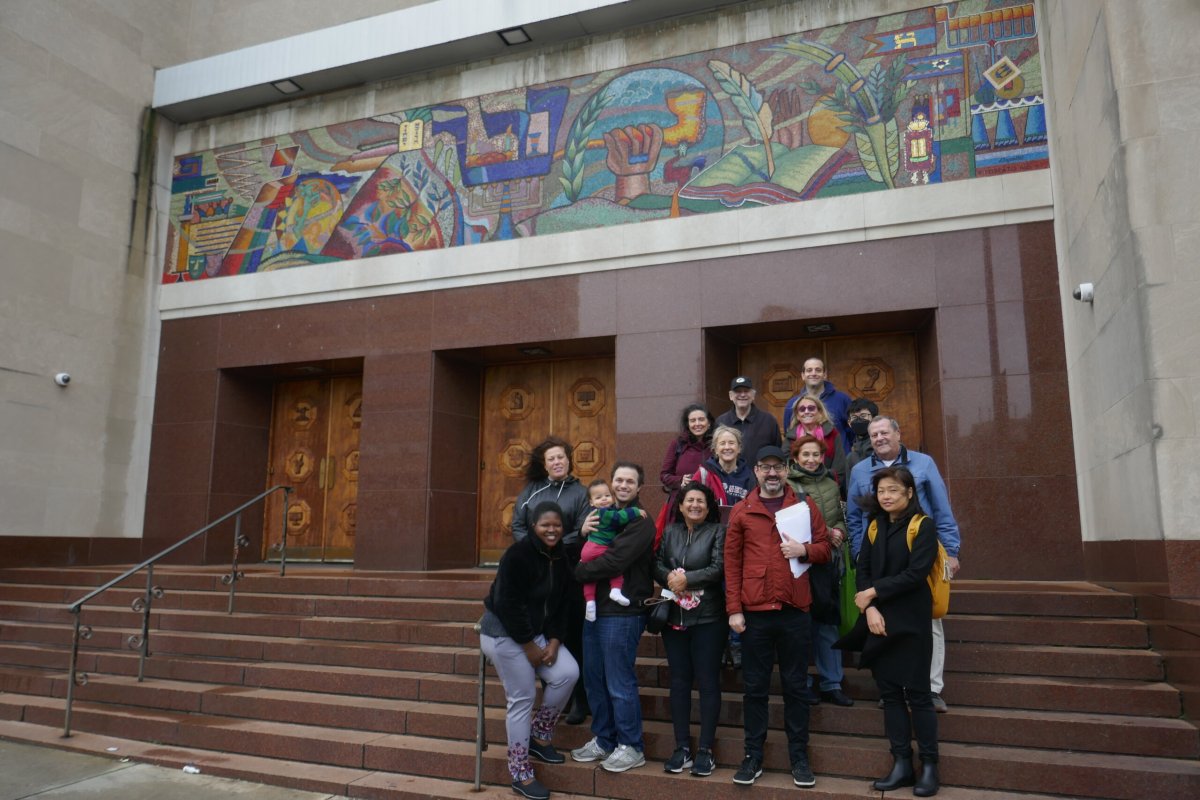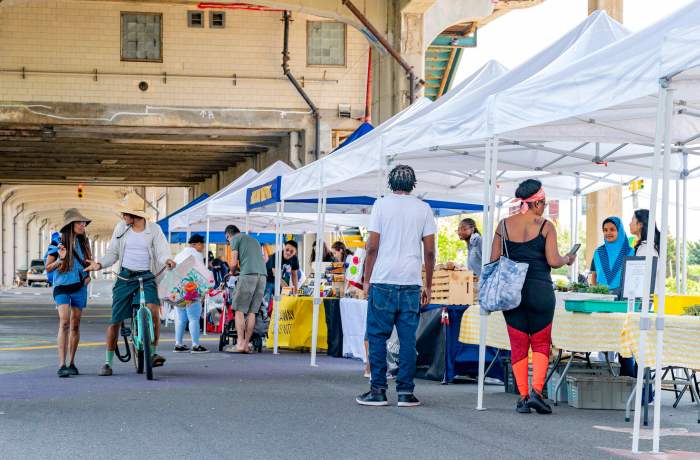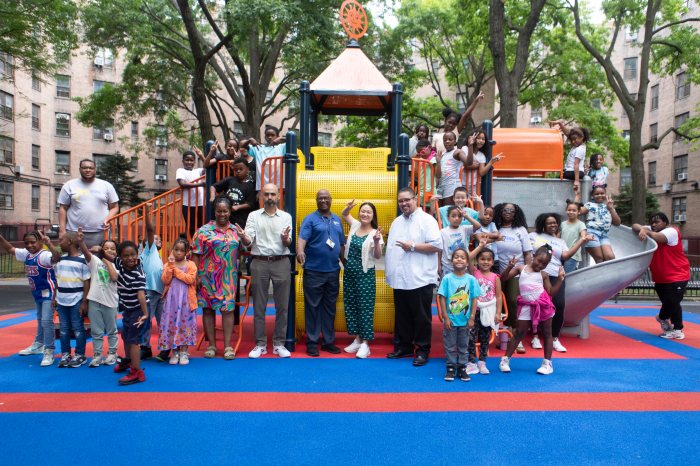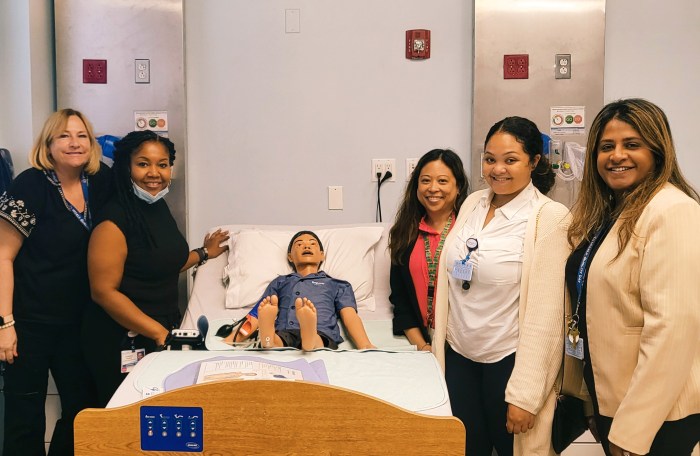Rego Park celebrated its 100-year anniversary with a walking tour of the area organized by the Rego-Park Forest Preservation Council and the Historic Districts Council on Saturday, Oct. 21.
The event took place from 11 a.m. to 1 p.m. and was led by Historic Districts Council Executive Director Frampton Tolbert and joined by Rego-Park Forest Preservation Council Chairman Michael Perlman on the tour, which highlighted apartment buildings from the 1920s and 1930s and single family homes that make up the historic area, as well as community landmarks in Rego Park.
The tour, which began on the corner of 63rd Drive and Queens Boulevard, showcased rows of unique harmonious Art Deco facades from the early 1940s, which once featured attractive window displays, showcasing goods.
“We are really lucky to have these early storefronts and they’re in great shape,” said Tolbert, who believes that they were designed or influenced by the style of the famed Morris Lapidus, architect of the Fontainebleau in Miami Beach.
Railroad style Colonial frame houses with enclosed porches between 63rd Drive and Eliot Avenue along Saunders, Booth, Wetherole, and Austin Street, which sold for an approximate $7,500 and were developed around 1925, were also featured during the tour.
Tolbert explained how subway stations were important at that time for determining where houses would be developed.
“In the 1930s, there were subway stations, which really developed the area. People were living in other boroughs in tenements and small apartments, and this was their first home. They were saving up to have a house with a yard for their families,” said Tolbert.
Rego Park’s first public school and the Lutheran Church were also important landmarks recognized on the tour.
“The school was designed under Walter Martin, who had just become the Superintendent of Buildings for the Board of Education,” Tolbert said. “It has beautiful Renaissance and Colonial Revival details and originally had capacity for 895 students.”
Speaking about the church, Tolbert added, “A Lutheran congregation from Elmhurst started meeting at a few places around the neighborhood. The company donated the land to have the church on the main strip of 63rd Drive, and Benjamin Braunstein designed a country church with a wood frame. He loved the Colonial and Tudor Revival styles.”
The Georgian Colonial mansion-like restaurant Boulevard Tavern’s was also mentioned on the walking tour of the area.
“This was the earliest Rego Park restaurant, which opened in 1929 and designed in the Spanish Colonial style. It held over 500 people and was a very important gathering place. JFK and Bob Kennedy gave talks there,” said Tolbert.
There was also a presentation delivered by Rego-Park Forest Preservation Council Chairman Michael Perlman at the Spanish Mission-style Marion Court in memory of the honorable Marion Legler (1932–2023). She was the granddaughter of Joseph F. Thone and her memories of Rego Park were quoted, enabling her voice to come alive.
Joseph F. Thone was one of the founders of Rego Park alongside Henry Schloh and Charles Hausmann.
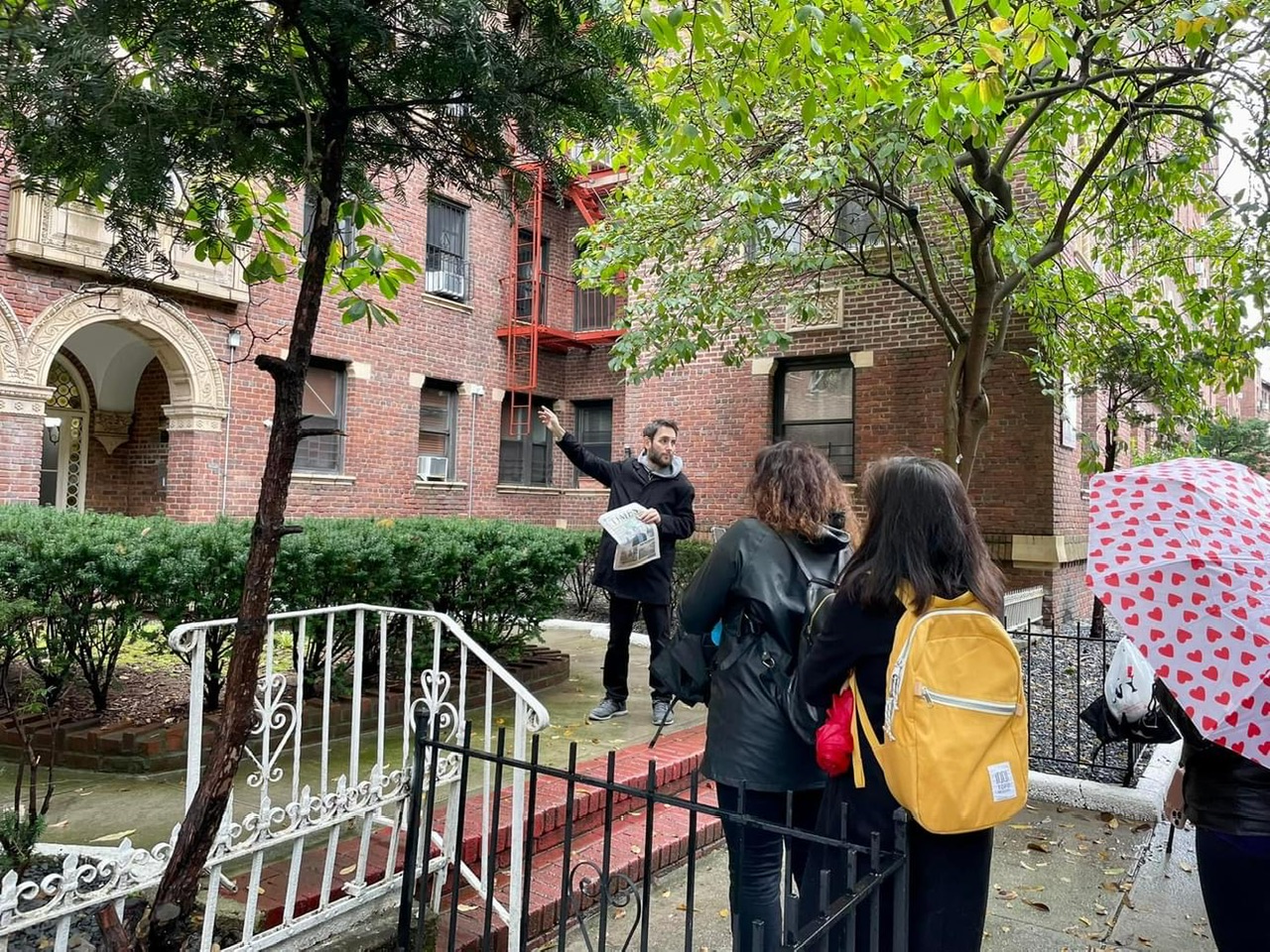
Perlman reflected on the importance of events like this one for the local community.
“With each walking tour, lecture and exhibit, we become more educated about our history and appreciate the architectural and artistic beauty,” he said. “Then we are bound to become better community preservation stewards. A community without landmarks or one that experiences the loss of potential landmarks impacts our quality of life, property values and our understanding of how our community and city originated. With each loss, our community is becoming more predictable and less distinctive, as we lose our identity.”
He also spoke about the collaboration with the Historic Districts Council on the walking tour.
“As a preservationist and fifth generation Forest Hills resident who founded Rego-Forest Preservation Council, I will say that I was proud to collaborate with tour guide Frampton Tolbert, who serves as executive director of the notable Historic Districts Council,” he said.
The Metropolitan Industrial Bank Building, now Mount Sinai Medical Center, the former Trylon Theatre and Rego Park Jewish Center were other notable buildings spoken about on the tour.

